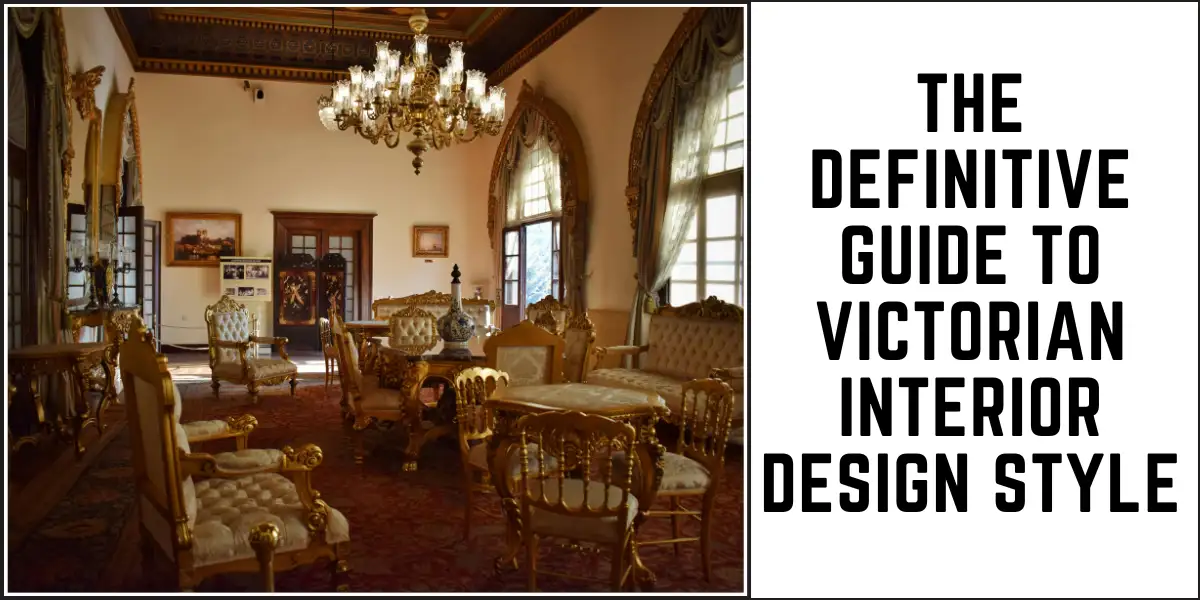The Definitive Guide to Victorian Interior Design Style

The Definitive Guide to Victorian Interior Design Style
welcome to the ageless charm of Victorian interior design where grandeur and elegance combined with nostalgia. This style has its roots deep within the cultural ethos of the 19th century. It is an attestation to romance and history and artistry rich in colors, ornate patterns, luxurious materials, and eclectic influences.
Whether you are an antique-buff or a modern home dweller incorporating classical flair into your home. This ultimate guide will be helpful to you on everything you should know about Victorian interior style.
A Glimpse into the Victon History
This Crowned Queen’s Period or Victorian Age began in the year 1837 and ended in the year 1901. Many changes came out of this society’s rapid pace of industrialization in technology and newly founded prosperity brought Britain’s middle class into this age.
Most of the combination with class which Victorian interior has displayed came from the newly opened global trade for materials and ornamental objects. Every inch of the room was filled with items almost dedicated to impress-from heavy drapery to hand-carved furniture, elaborately ornate wallpapers to extremely detailed woodwork.
Color Palette that Drenched Elegance
The Victorian color scheme was drastically deep, moody, and immersive. Color on the walls often stretched from paint to rich garnet to navy blue to chocolate brown. Deep rich hues were an embodiment of the Victrorian take on luxury. Selected to make rooms warm, intimate, even grand. Jewel tones-abundant from emerald to ruby to sapphire-intruding through upholstery, stained glass, or decorative touches.
Furniture That Speaks History
Beautiful chiseled patterns of carving, huge, and dark wood such as mahogany, walnut, or rosewood are commonly used to make different furniture items. In the seating arrangement, chaise lounges, fainting couches, and button-tufted armchairs always had the stamp of comfort.
Upholstery was soft in leather-based upholstery, velvets, brocades, or even tapestries.Parlors would house extravagant coffee tables, bookcases made entirely of carvings from wood, while grand pianos would fit into the room. Four-posters or canopied beds dressed the bedrooms; the dressers had lace-draped fabrics.
Walls that Whisper Tales
Walls in Victorian interiors formed the canvases that told stories. It was at this time that the wallpapers became a tremendous success due to advances in printing technology. Patterns were bold and busy – large-scale florals and arabesques damasks, and chinoiserie.
If not wallpapered, finished with moldings in high color suffusions. Picture rails, chair rails, and wainscot were elements found that added dimension and visual interest. Ceilings also tended not to be overlooked. Many featured medallions, beams, or plasterwork to frame elegant chandeliers or pendant lighting.
Textiles: The Soul of Victorian Drape
They made the weight heavier in order to soften the full richness of the Victorian interiors. Curtains usually had several layers of sheer lace under curtains giving plenitude of outer drapes and velvet or brocade. thereby having tiebacks, tassels, and valances quite grand and theatrical.
Rugs, especially of Persian or Oriental style, became one of the essential materials to add the warm light into floors. Especially for homes with hardwood or parquet floors. These don’t just serve the functional purpose but for emotional warmth and sophistication.
Lighting That is Resplendent
Victorian lighting was all about atmosphere as well as illumination. In the earlier era houses were lit with gas lamps and candles. By the late Victorian period electricity had started to leave its initial marks which introduced electric chandeliers and sconces.
Table lamps with either fringed or stained-glass shades added intimacy to side tables and writing desks. Wall sconces were used alongside mirrors and paintings, adding an effect by illuminating candles or laterized electric bulbs with them. Stained and colored glass became particularly fashionable. Americans found themselves perfectly suited to the Victorian taste and often hung in the drawing room or library.
Accessories and Collectibles: The Art of Layering
If there is any singular rule for Victorian interiors lived by is the more the better. That of the fireplace mantel became emotional for mounting seasonal arrangements, photo frames, or gilded mirrors.
Layering is key but not in a haphazard way, but in an adventurous show of taste attained through travel and wealth. This obsession was also reflective of the Victorian love for learning and discovery.
Victorian Revival in Present Day
Victorian revival does not actually lie in setting up a perfect copy but in drawing inspiration. Ornate printed wallpapers, vintage lighting, claw-foot bathtubs, and antique furniture are fused into modern arrangements that look both eclectic and grounded.
For example, a sleek kitchen featuring deep-green cabinetry placed with brass handles, or a modern bedroom showcasing velvet drapes, gilded mirrors, and tufted headboards.
How to Bring Victorian Charm into Your Home?
If you’re planning on achieving the Victorian style, start with small. An antique armchair, vintage mirror, or a patterned rug to gradually introduce the aesthetic. Deepen your color palette with rich, moody tones or invest in some classic wallpaper to make a statement wall.
Lighting makes a huge difference in bringing charismatic lamps into space. Accumulate some strategic decorative art such as a marble clock, picture frame, or porcelain vase to create layered Victorian look. The beauty of this style is that the telling belongs to a grand narrative in beauty, history, and personal expression.
Conclusion
Victorian interior design isn’t merely decoration. It’s building that space that will step you into a different time, filled with romance, drama in every corner of the space. Victorian design offers thousands of inspiration from restoring an ancient into a modern area with just the right amount of vintage charm.
READ MORE :: Differences Between Fast Food Chains and Fine Dining Restaurants

